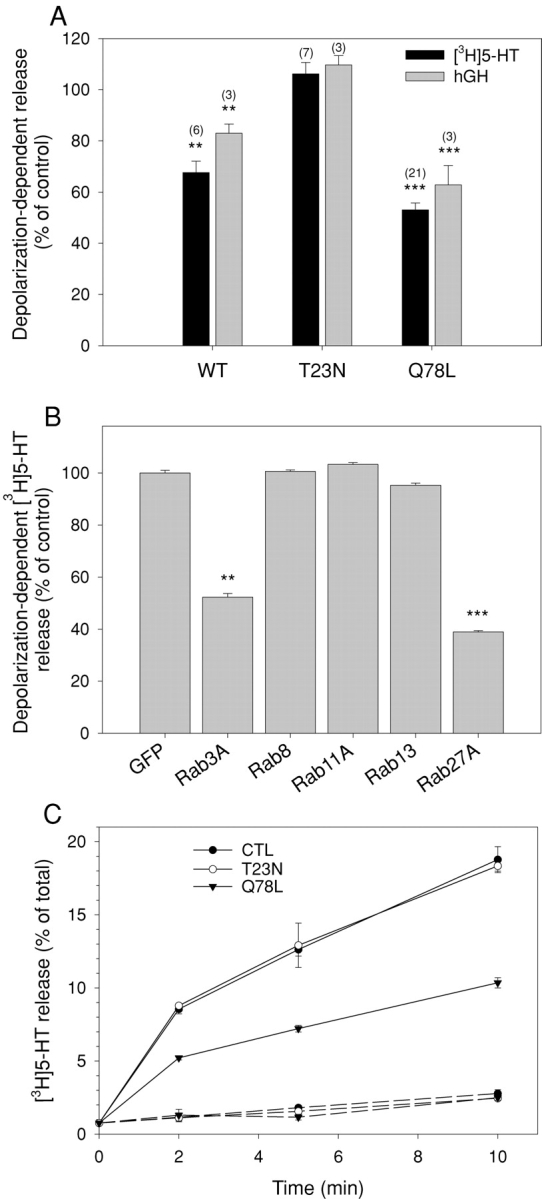Figure 5.

Rab27A controls the magnitude of secretory responses. (A) SERT-transfected (black bars) or hGH-transfected PC12 cells (gray bars) were cotransfected with vectors encoding untagged Rab27A wild type, Rab27A-T23N, or Rab27A-Q78L, as indicated. Cells were incubated for 10 min in normal or high K+ saline. Release in normal saline medium (2–5% of cellular [3H]5-HT) was subtracted. Results are shown as percentage of the responses of mock-transfected cells. Numbers in brackets refer to the number of independent experiments. The stimulus-dependent release of control cells ranged from 15 to 30% of cellular [3H]5-HT (mean ≈ 20%). (B) Effect of GTPase-deficient Rab3A, Rab8, Rab11, and Rab13 on secretory responses measured as in A. Rab8, Rab11, Rab13, and Rab27A were fused to GFP. Transfection of GFP was used as a control. Results are shown as percentage of the depolarization-dependent [3H]5-HT release from control cells (mean ± SEM, n = 3 independent experiments). Whereas Rab3A-Q81L and GFP–Rab27A-Q78L inhibit PC12 cell stimulated exocytosis, no effect was observed upon overexpression of GFP-tagged GTPase-deficient Rab8, Rab11, or Rab13. (C) [3H]5-HT release as a function of time from control cells (•) or from cells expressing Rab27A-T23N (○) or Rab27A-Q78L (▾). Cells were incubated in normal (dotted line) or high K+ saline (plain line). Results are expressed in percentage (mean ± SEM, n = 3) of total [3H]5-HT present in the cells before stimulation. Similar results were obtained in two other independent experiments.
